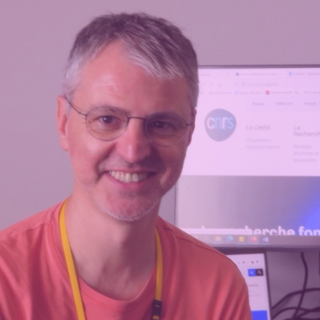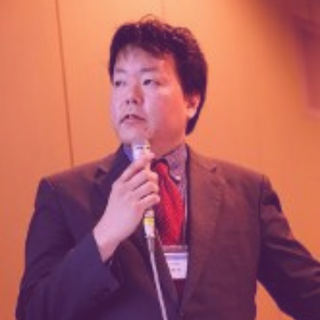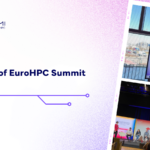Events
Information
Start:
2025/12/11
End:
2025/12/11
Location:
Chamonix, France
HANAMI Europe-Japan HPC Strategic Dialogue: What’s next for strategic scientific areas?
In conjunction with the HANAMI Symposium
As part of the HANAMI Symposium 2025, this Second High-Level Stakeholder Event will bring together key voices from across Europe and Japan to discuss the future of strategic scientific collaboration—particularly in high-performance computing (HPC).
Under the theme “What’s next for strategic scientific areas for EU-Japan HPC Collaboration,” the event will explore how cross-continental partnerships can drive innovation, tackle global challenges, and build the next generation of scientific infrastructure and discovery.
This dialogue will convene policymakers, research funders, leading scientists, and key stakeholders from both regions to reflect on achievements and co-design the next steps for enhanced scientific cooperation.
Date: December 11, 2025
Location: Chalet Hôtel Le Prieuré, Chamonix, France
Why Attend?
- Engage directly with top-level policymakers and research leaders from Europe and Japan;
- Shape the strategic direction of science and innovation policy;
- Connect with major research centres and funding initiatives driving the EU-Japan HPC agenda;
- Collaborate on defining new priority areas for joint scientific investment and development.
Keynote Speakers

University of Reading
Pier Luigi Vidale is Professor of Climate System Science and co-leads the joint NCAS-Met Office global High Resolution Climate Modelling programme. Since a major UK-Japan collaboration in 2004-2007, Pier Luigi has played a world-leading role in high resolution climate modelling and understanding the role of meso-scale processes in the global climate system. He was the Scientific Coordinator of the EU’s H2020 PRIMAVERA (defining HighResMIP for CMIP6), currently co-leads the EU’s Horizon Europe EERIE (defining HighResMIP2 for CMIP7). Pier Luigi is actively involved in the development of km-scale global models, e.g. as investigator in the EU’s H2020 NextGEMS project, and in collaborations with the Met Office. Pier-Luigi is co-Chair of the World Climate Research Programme’s Digital Earths Lighthouse Activity, aiming to define the nature and purpose of Digital Twins for climate, and is the Director of Science Collaboration in the University of Reading’s £30M AFESP programme.

French National Center for Scientific Research
In 1998, Fabien Grasset received his Ph.D. degree in solid-state chemistry from the University of Science and Technology of Bordeaux, France, and the Bordeaux Institute of Condensed Matter Chemistry (ICMCB). After a postdoctoral stay at ICMCB on magnetic nanoparticles for nanobiotechnology (group of Professor E. Duguet), he undertook a STA postdoctoral fellowship at the National Institute for Materials Science (NIMS) in Japan from 1999 to 2001 in the group of Professor H. Haneda on magnetic core-shell SiO2 nanoparticles. He joined the University of Rennes 1 (UR1), France, as assistant professor in September 2001 and as associate professor since 02/2003. He worked in the Glass and Ceramics lab until 2006 and moved to the solid-state chemistry and materials group at UMR 6226 ISCR until September 2014 in order to develop nanomaterials and colloidal chemistry. He joined CNRS in October 2014 as Director of Research and he worked as Director of the IRL 3629 LINK CNRS Saint-Gobain NIMS based at NIMS, Tsukuba, Japan. From 02/2020 to 08/2023, he was working as Director of research at ISCR, Rennes, France. Since 09/2023, he came back to the IRL LINK as Unit Director.
His area of research interest focuses on the synthesis of new functional colloidal nanostructure (M@ZnO, M@SiO2, and g-Fe2O3) and thin films. Since 2006, he extended his knowledge on nanocomposite materials based on metal atoms clusters. He published more than 130 papers.
He defended his “Habilitation à Diriger des Recherches-HDR” in May 2008. In 2007, he was invited as a Short-Term Fellow of the International Center for Young Scientist (ICYS) at the National Institute for Materials Science under ICYS/NIMS program for 3 months. From 2007 to 2009, he was one of the PI of a MERLION PHC between the National University of Singapore (Professor Y. Zhang) and the University of Rennes 1. From 2008 to 2012, he was elected to the National Committee of CNRS (section 15). Since 2011, he was PI in the ANR’s projects CLUSTOP, ZnO-type-P, DUVNANO and CLIMATE and currently in NanoLetsgos and MONICA projects and also in several projects with industrial partners.

Director of the Office for the Promotion of Computing Science, Research Promotion Bureau at MEXT
Mr. Kiyoshi KURIHARA currently serves as Director of the Office for the Promotion of Computing Science, Research Promotion Bureau at MEXT (the Ministry of Education, Culture, Sports, Science and Technology, Government of Japan).
From 2022 to March 2024, he was Director for General Affairs at the National Healthcare Policy Secretariat, Cabinet Office. Between 2021 and 2022, he worked as Deputy Director of the Strategy Planning Division in the Science and Technology Policy Bureau at MEXT.
From 2018 to 2021, Mr. KURIHARA was First Secretary for Science and Technology at the Embassy of Japan in India and Bhutan, under the Ministry of Foreign Affairs.
His prior appointments include Deputy Director of the International Science & Technology Affairs Division (2017–2018) and Deputy Director of the Information Science and Technology Division (2015–2017) at MEXT. From 2014 to 2015, he joined the Manchester Institute of Innovation Research at the Manchester Business School, University of Manchester in the UK.
He also served as Deputy Director of the International Affairs Division at the Nuclear Regulation Authority, Ministry of the Environment (2012–2014), Deputy Director of the Radiation Protection and Accident Management Division in the Nuclear Safety Commission, Cabinet Office (2011–2012), and Unit Chief of the Regenerative Medicine Promotion Office in the Life Sciences Division, Research Promotion Bureau, MEXT (2009–2011).
Earlier in his career, he was Unit Chief of the NorthEast Asia Division at the Trade Policy Bureau, METI (2007–2009), and worked in the University–Industry Collaboration Division at MEXT (2005–2007).
Agenda
This is a preliminary version that will be updated shortly.
Related Events
More information soon available!

